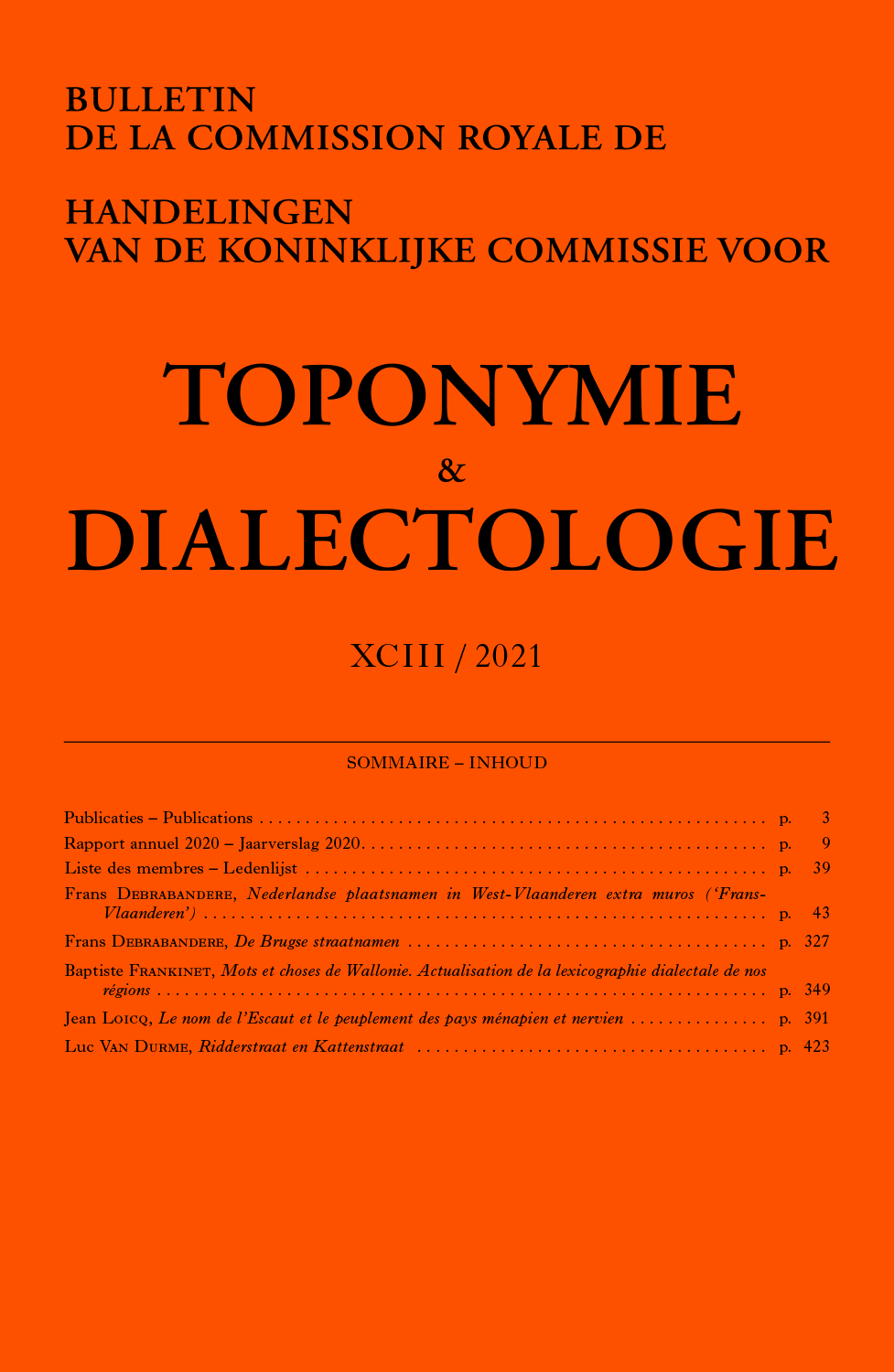 previous article in this issue previous article in this issue | next article in this issue  |

Preview first page |
Document Details : Title: De riviernaam Rupel en het toponiem Rupelmonde Author(s): VAN LOON, Jozef Journal: Handelingen van de Koninklijke Commissie voor Toponymie en Dialectologie Bulletin de la Commission Royale de Toponymie et Dialectologie Volume: 91 Date: 2019 Pages: 197-246 DOI: 10.2143/TD.91.0.3286978 Abstract : De riviernaam Rupel [rypǝl] (prov. Antwerpen) kan worden gereconstrueerd als *rūpina. Er wordt verondersteld dat de naam teruggaat op de Indo-Europese wortel *reub ‘breken, scheuren’. Behalve bezwaren van fonologische en historische aard is echter problematisch dat de naam geen parallellen heeft in de Oudeuropese hydronymie. De gereconstrueerde naam is daarentegen, zoals reeds gesuggereerd door Devleeschouwer in 1975, althans in vorm volledig identiek met het Laatlatijnse rūpīna, dat met zijn opeenvolgende betekenissen ‘bergkloof > rivier in een ravijn > kanaal’ echter slechts bekend is in de toponymie van Noord-Italië, Zwitserland en Zuid-Frankrijk. De etymologie van de riviernaam wordt verder gecompliceerd door de verwarrende variatie in de historische attestaties van de stamklinker en de eindmedeklinker. In deze bijdrage wordt verondersteld dat de lange /ȳ/, die in Brabant was ontstaan door secundaire umlaut, werd ingekort tot /y/ in de aangrenzende Vlaamse dialecten, waar /ӯ/ een onbekend foneem was toen de Brabantse riviernaam er werd ontleend bij de stichting van het stadje Rupelmonde. In de noordelijke Vlaamse dialecten werd de ingekorte /y/ ontrond tot /i/ (Ripelmonde) en in de twaalfde eeuw klankwettig gerekt tot /ē/ (Repelmonde). Het ‘Ingweoonse’ karakter van deze ontronding is door de perifere en onverwachte vindplaats tot nu onopgemerkt gebleven, maar wordt bijkomend bevestigd door de archiefvondst van een ander tot nu onbekend geval van Ingweoonse ontronding (nitscip) uit dezelfde streek. The river name Rupel [rypǝl] (prov. Antwerp) can be reconstructed as *rūpina. The name is assumed to be related to the prehistoric root *reub ‘break, tear, erode’. Apart from phonological and historical objections, it remains problematic that no name parallels can be found in the Old European hydronymy. The reconstructed name is, as was already suggested by Devleeschouwer in 1975, at least in form and perhaps by accident, identical to Late Latin rūpīna, which, however, with its successive meanings ‘rock gorge > canyon river > canal’ is only known in the toponymy of northern Italy, Switzerland and southern France. The etymology of the river name is further complicated by the confusing variation in the historical attestations of the stem vowel and the last consonant. The long /ȳ/ of *rӯpina, which in Brabant arose as an effect of secondary umlaut, was shortened to /y/ in the Flemish dialects, where /ӯ/ by the end of the eleventh century was an unknown phoneme at the time the Brabantic river name was borrowed with the creation of the Flemish town of Rupelmonde. In the northern Flemish dialects the new short /y/ was unrounded to /i/ (Ripelmonde), which in the twelfth century regularly lengthened to /ē/ (Repelmonde). The ‘Ingvaeonic’ character of the unrounding has hitherto remained scholarly unnoticed due to its peripheral and unexpected location. It is confirmed, however, by the archival finding in the same region of another hitherto unknown unrounding instance (nitscip). |
 |


